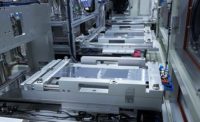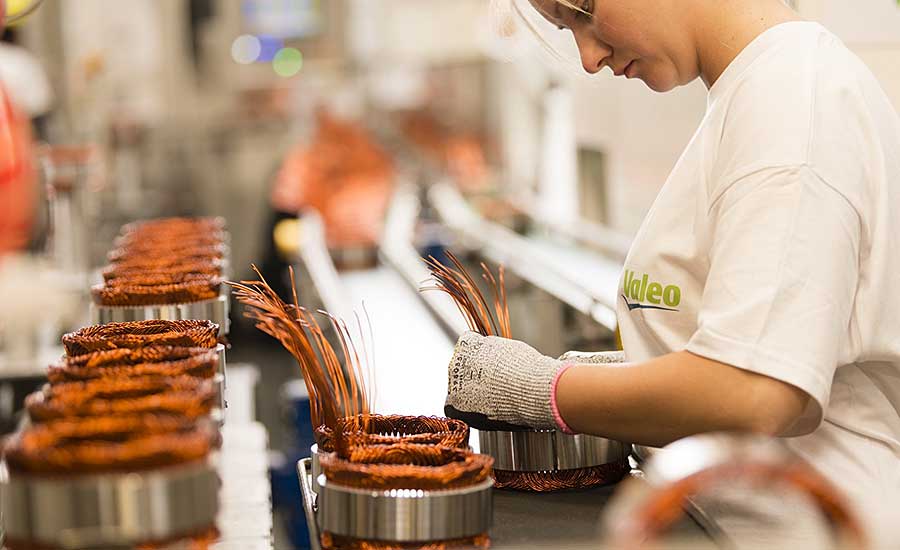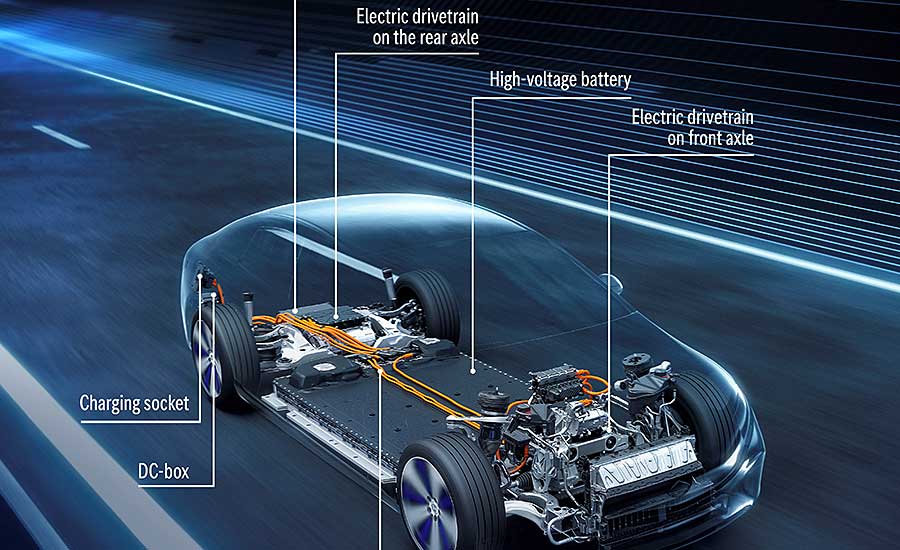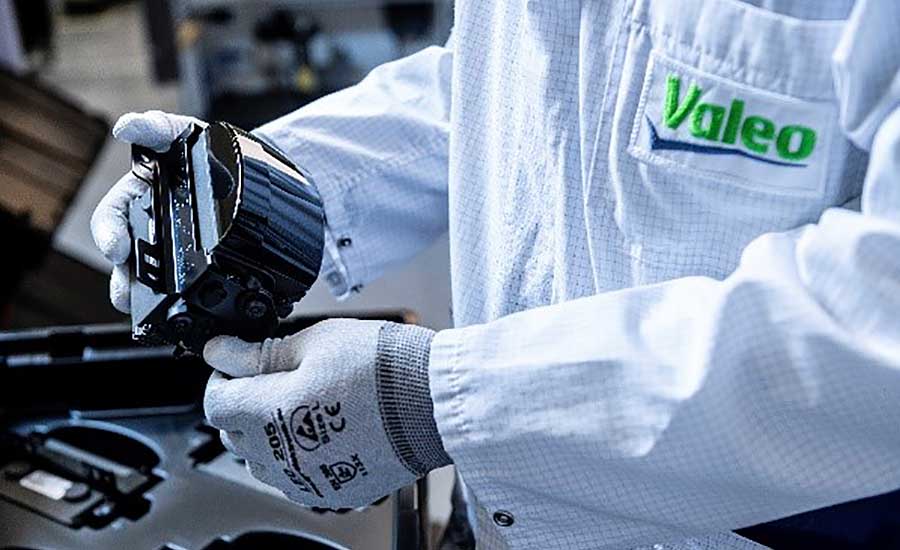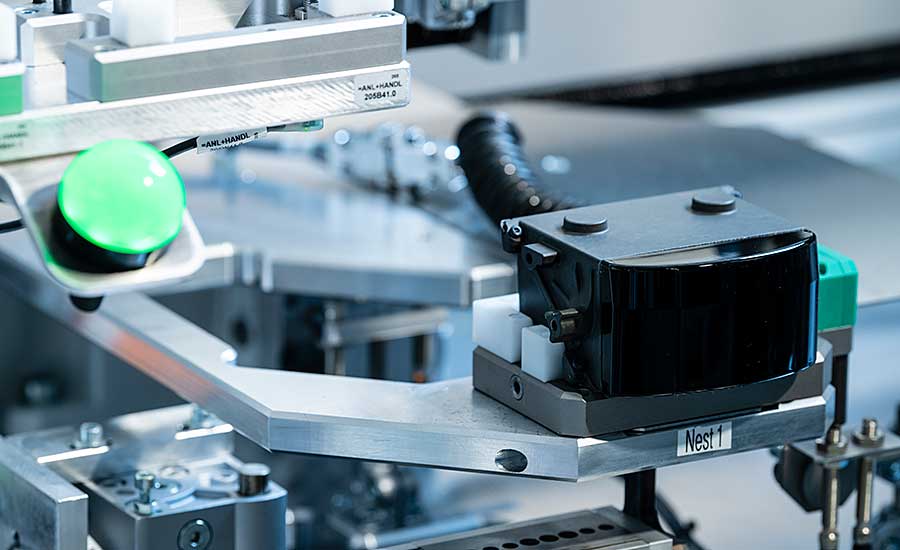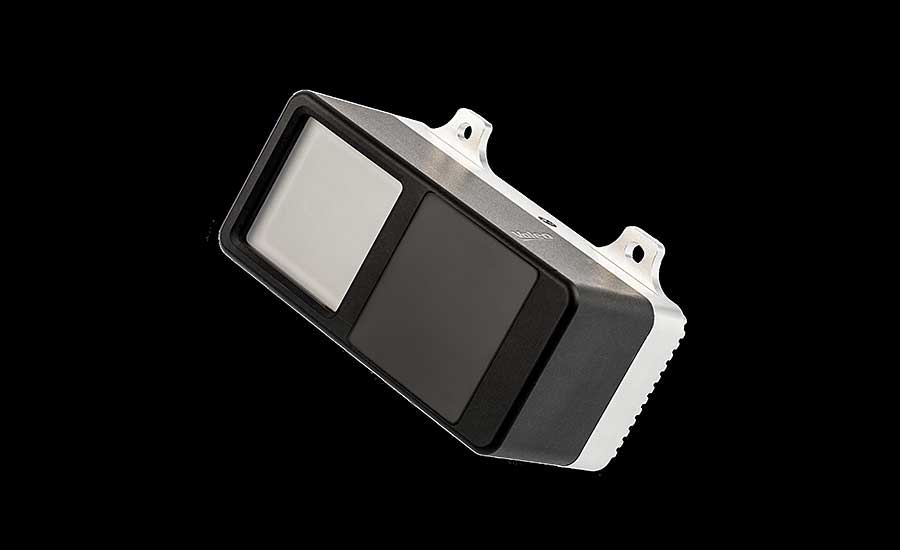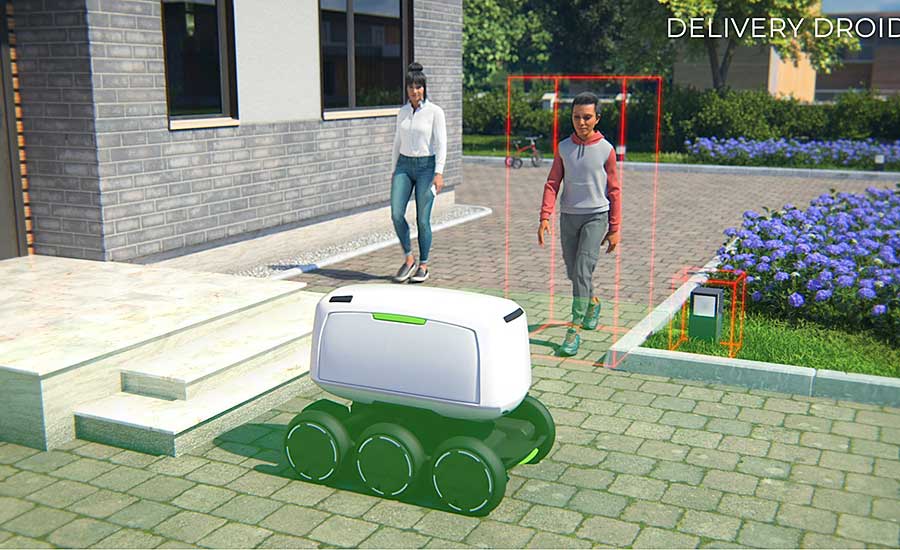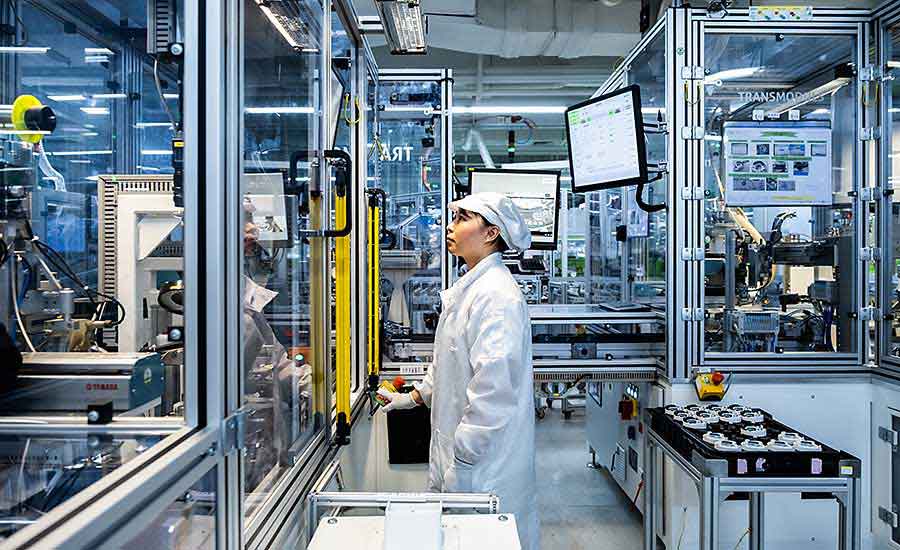Valeo Sees Big Opportunity in EVs

Valeo is a leading supplier of high-voltage electric drives and 48-volt electrical systems. Photo courtesy Valeo

Valeo recently supplied the entire electric power train of the Mercedes-Benz EQS sedan. Illustration courtesy Daimler AG

One-third of all new vehicles produced worldwide contain advanced driver-assistance systems made by Valeo. Photo courtesy Valeo

Valeo is a leading producer of lidar systems, which it assembles at a state-of-the-art factory in Germany. Photo courtesy Valeo

Electronics form the heart of many Valeo products. Photo courtesy Valeo

In addition to producing long-range sensors, Valeo recently unveiled a near-field lidar device. Photo courtesy Valeo

NFL is designed for use on autonomous vehicles, such as driverless delivery pods. Illustration courtesy Valeo

Valeo operates 187 plants in 33 countries around the world that support both traditional automakers and startups. Photo courtesy Valeo

Autonomous technology is an increasingly important part of Valeo’s diverse product portfolio. Photo courtesy Valeo









Valeo is a Tier One automotive supplier that specializes in advanced driver-assistance systems (ADAS), interior, lighting, power train and thermal management systems. The $17 billion French company operates 184 plants in 31 countries around the world that support both traditional automakers and startups. Valeo is based in Paris, but its North American headquarters is located in Troy, MI.
Next year, Valeo will celebrate its centennial. The company traces its roots to a small workshop outside of Paris that made brake linings and friction materials. By the 1930s, Valeo expanded into clutches, followed by thermal systems in the 1960s. In the 1970s, the company branched out into electrical components and lighting, following the acquisition of Cibie and Marchal.
Today, Valeo claims that 25 percent of all new vehicles produced worldwide contain its ADAS technology, which includes state-of-the-art cameras and sensors. In recent years, the company has doubled in size and become a leader in autonomous and electric mobility technology.
For instance, Valeo recently supplied the entire electric power train of the Mercedes-Benz EQS sedan, including dual motors (the rear e-axle provides 300 kilowatts of power, while the front axle generates 170 kilowatts), an inverter and a reducer.
Valeo is also a leading manufacturer of lidar systems. In fact, it has already produced more than 160,000 units, and a wide variety of cars equipped with laser scanners and lidar use the company’s products.
Valeo recently unveiled a third-generation lidar system that enables Level 3 automation and is set to debut on production vehicles in 2024. It offers significantly enhanced performance, makes autonomous mobility a reality and provides previously unseen levels of road safety due to cutting-edge range, resolution and frame rate.
This laser scanner can detect objects located at distances of more than 200 meters. It reconstructs a 3D real-time image of the vehicle's surroundings at a rate of 4.5 million pixels and 25 frames per second. Because of its unique perception capabilities, the device can see things that humans, cameras and radars cannot.
Together with software based on artificial intelligence (AI), the system combines collected data and enables the vehicle to instantly make the right decision. It automatically adapts to the environment and improves its performance over time through regular updates.
Earlier this year, at the CES Show in Las Vegas, the company demonstrated a new short-range lidar system dubbed Valeo NFL (Near Field Lidar). When used on driverless delivery pods and other vehicles, it creates a safety “bubble” that provides peripheral vision, eliminating blind spots.
Valeo's lidar units are produced at the company’s state-of-the-art factory in Wemding, Germany, where components are assembled and tested with a micron level of precision.
Autonomous and Electric Mobility recently asked Michel Forissier, chief engineering and marketing officer at Valeo, to outline his company’s strategy for next-generation vehicles.
AEM: Valeo’s motto is “smart technology for smarter mobility.” Why is this strategy important in today’s rapidly evolving auto industry?
Forissier: Most functions in an automobile today are turning electronic. All components now comprise electronic hardware and software, which allows new functions that make vehicles smarter. For instance, ADAS systems and intelligent lighting make vehicles safer, while electric and electronic systems make vehicles more efficient.
AEM: Does electrification require a new production mindset or a new way for suppliers to approach manufacturing?
Forissier: Electric motors are very different than internal combustion engines, because they are less complex and much simpler. But, there are new challenges that must be addressed, such as managing balance, sound and vibration-related issues due to the elimination of traditional engine noise. Power electronics become more important while dealing with high voltages and high currents. Battery management and temperature control must also be carefully addressed in EVs. Current efficiency and safety become critical, which requires automation and tighter quality control. In particular, robots are necessary for handling EV parts that tend to be heavier and bulkier.
AEM: How is the transition from internal combustion engine vehicles to electric vehicles affecting plant floor operations in your factories?
Forissier: We’ve made a progressive evolution in our factories. For instance, some of our plants in France that have traditionally produced alternators and clutches have slowly shifted to making traction motors and other components used in electric vehicles.
AEM: Have you invested in any Industry 4.0 technology to prepare your factories for the EV era?
Forissier: Yes, we have installed a lot of new automation in our plants. For instance, we currently have more than 1,000 collaborative robots in operation. Most applications involve material handling. We also use AI technology to improve quality as we produce more advanced electronics, which are used in many of our products.
AEM: How will your experience from producing low-voltage products during the past 10 years help as you produce more high-voltage devices during the next 10 years?
Forissier: Most of the technology is the same. However, wire diameter is different for high-voltage products. Power electronics are also more complicated. We’ve learned a lot through our joint-venture partnership with Siemens, which focused on e-motors, inverters and power electronics (the company recently announced that it will buy 100 percent of the shares of the joint venture in July). End-of-line testing and quality are increasingly critical, but the big challenge is to do it fast.
AEM: ADAS technology has evolved from relatively simple mechanical devices to complex mechatronic products. Has that changed how your products are assembled and tested?
Forissier: Yes. Products such as lidar require extremely precise machining, assembly and quality control. All parts are controlled to the micron. And, because software is a key attribute of product performance, end-of-line testing has become much more sophisticated to ensure performance and compliance.
AEM: How is Valeo preparing for the future era of autonomous vehicles?
Forissier: This is one of the key areas that we are focusing on today, with many exciting opportunities for growth. We are the largest producer of ADAS sensors in the world, supplying many of the top automakers. We’re also developing a new 360-degree system, including cameras and chips, for automatic parking applications.
SCALA is the automotive industry's first commercial 3D lidar sensor for AV applications. It provides a wide field of view up to 145 degrees. Its AI-based integrated software detects, recognizes and classifies static and dynamic objects up to a distance of 200 meters in all weather and lighting conditions.
Our third-generation laser scanner technology, which is scheduled to hit the market in 2024, will go even further, making it possible to delegate driving in many situations, including at speeds of up to 130 kilometers per hour on the highway.Looking for a reprint of this article?
From high-res PDFs to custom plaques, order your copy today!




